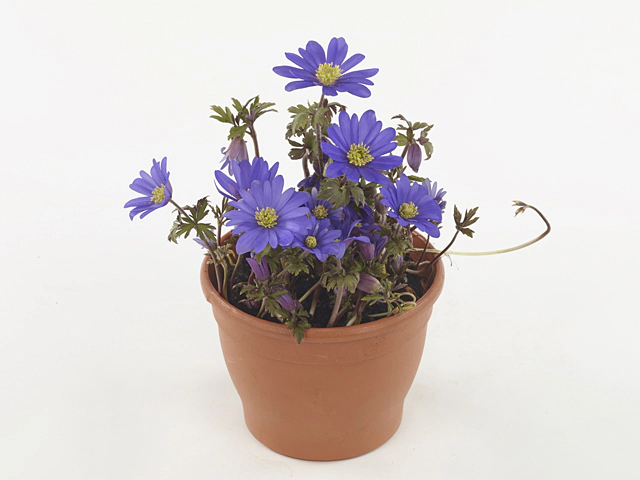Anemone blanda

| Flower scent | Unscented |
| Leaf type | Foliage leaf |
| Winter hardness | Good (USDA-zone 5, 6) |
| Flower color | Blue-dark blue violet-093B |
| Inflorescence | Few-flowered |
| Structure (tissues) | Herbaceous |
| Light conditions | Semi-shades |
| Plant, growth type | Trailing |
| Toxicity (if consumed) | Fairly |
| Moisture requirements | Normal; Well-drained |
| Soil type | Humus rich |
Anemone blanda, commonly known as Windflower or Anemone, is a delightful flower that can bring a splash of color to any garden. With its vibrant blue-dark blue violet flowers, this herbaceous plant is a favorite among gardeners.
One of the great qualities of Anemone blanda is its ability to thrive in various light conditions. It prefers semi-shades, making it an excellent choice for those areas in the garden that receive dappled sunlight. The plant's trailing growth type adds a touch of elegance to any landscape, as it gracefully spreads along the ground or trails over container edges.
The winter hardness of Anemone blanda is good, making it suitable for USDA zones 5 and 6. This means that it can withstand colder temperatures, ensuring that you can enjoy its beauty year after year. However, it is essential to note that extreme cold conditions might require additional protection for the plant.
In terms of the plant's structure, Anemone blanda consists of herbaceous tissues. This results in a delicate and soft appearance, enhancing the overall charm of the flower. The inflorescence of this species is few-flowered, meaning that each stem produces a small number of blossoms. This adds a sense of exclusivity to the blooms, making them even more captivating.
Anemone blanda is also appreciated for its unscented flowers. While some garden enthusiasts prefer fragrant blooms, others enjoy the simplicity of scentless flowers. This makes the Windflower an excellent choice for those who appreciate the visual beauty of a flower without the overpowering scent.
When it comes to soil requirements, Anemone blanda prefers a humus-rich type. Maintaining well-drained soil is crucial for the plant's health. It is recommended to provide this flower with normal moisture levels, so regular watering is necessary, especially during dry periods.
One important consideration with Anemone blanda is its toxicity if consumed. While the plant is fairly toxic, it is unlikely to be ingested by humans or pets due to its unappealing taste. However, if you have children or animals that might be curious or prone to nibbling on plants, it is advisable to keep an eye on them and ensure this flower is out of their reach.
The Windflower, or Anemone blanda, is a beautiful addition to any garden. Its stunning blue-dark blue violet flowers, ability to thrive in semi-shaded areas, and herbaceous structure make it a standout among other plants. As long as you provide it with well-drained, humus-rich soil and regular watering, this species will reward you with its charming blooms. Just make sure to keep it away from curious little mouths to maintain a safe and enjoyable gardening experience.
Market availability index by month:
| Jan. | Feb. | Mar. | Apr. | May | Jun. | Jul. | Aug. | Sep. | Oct. | Nov. | Dec. |
|---|---|---|---|---|---|---|---|---|---|---|---|
| 1 | 2 | 4 | 2 | - | - | - | 1 | - | - | - | - |